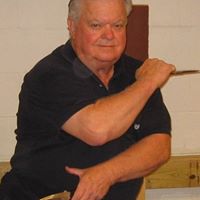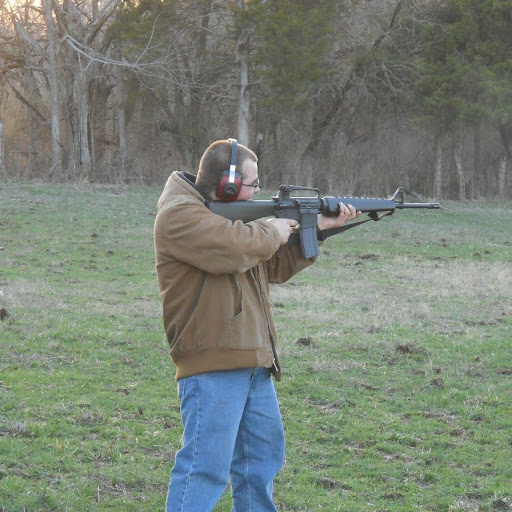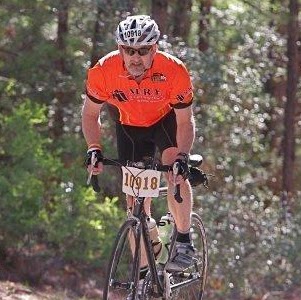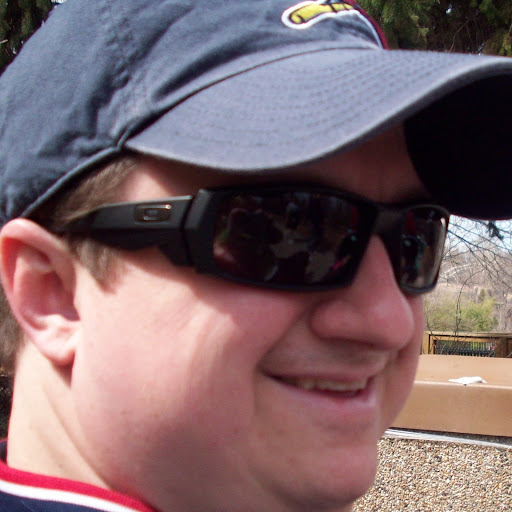John N Boren
from Katy, TX
- Also known as:
-
- John Boren
- John Neville Boren
- Phone and address:
-
21927 Sage Mountain Ln, Katy, TX 77450
2819324503
John Boren Phones & Addresses
- 21927 Sage Mountain Ln, Katy, TX 77450 • 2819324503
- Plano, TX
- Houston, TX
- Dallas, TX
- Tyler, TX
Work
-
Address:1450 W Grand Pkwy S, Katy, TX 77494
-
Specialities:Chiropractor
Languages
English
Specialities
Chiropractic • Chiropractic Rehabilitation
Medicine Doctors

Dr. John P Boren, Katy TX - DC (Doctor of Chiropractic)
view sourceSpecialties:
Chiropractic
Chiropractic Rehabilitation
Chiropractic Rehabilitation
Address:
1450 W Grand Pkwy S Suite M, Katy, TX 77494
2813472225 (Phone)
2813472225 (Phone)
Languages:
English

John P Boren, Katy TX
view sourceSpecialties:
Chiropractor
Address:
1450 W Grand Pkwy S, Katy, TX 77494
Us Patents
-
Cervical Traction Unit
view source -
US Patent:48692409, Sep 26, 1989
-
Filed:Jul 14, 1988
-
Appl. No.:7/219891
-
Inventors:John P. Boren - Houston TX
-
International Classification:A61H 102
A61F 524
A61F 504 -
US Classification:128 75
-
Abstract:An improved cerical traction apparatus adapted for use with an overhead door frame is disclosed. The traction apparatus has a spring mounted with a clamp. The spring is movable relative to the clamp between a rest position and an operating position for providing a range of traction loadings. A head halter or headstall for fastening to a user's head is mountable to a spreader bar secured to the spring. When the traction apparatus is secured to the door frame, the user is quickly and conveniently able to achieve a range of loadings in the operating position or no loading in the rest position by the position of the headstall fastened to the user's head.
-
Exercise Machine
view source -
US Patent:52639134, Nov 23, 1993
-
Filed:Jul 31, 1992
-
Appl. No.:7/922807
-
Inventors:John P. Boren - Houston TX
-
International Classification:A63B 21068
-
US Classification:482 96
-
Abstract:An exercise machine or apparatus (10) to permit a user (U) to perform a squatting exercise while supported in an inclined supine position on a slidable platform (12) which may be positioned at a predetermined inclination relative to the vertical by adjustment of the length of a diagonal leg (16) is disclosed. The movable platform (12) has bearing sleeves (64) mounted for sliding movement along fixed rods (60). Shoulder pads (78) on the platform (12) engage the shoulders of user (U) supported on the platform (12) with the feet of the user supported on a foot rest (52). Force exerted by the user (U) against the shoulder pads (78) by a pushing action of the feet from the bent position shown in FIG. 1 forces the platform (12) upwardly for straightening of the legs of the user (U). The vertical load exerted by the user (U) is determined by the inclination of the body support platform (12).
-
Motion Converting Mechanism For An Exercise Machine
view source -
US Patent:52135560, May 25, 1993
-
Filed:Jul 10, 1992
-
Appl. No.:7/912095
-
Inventors:John P. Boren - Houston TX
-
International Classification:A63B 21062
-
US Classification:482137
-
Abstract:In accordance with an illustrative embodiment of the present invention, a motion converting mechanism for an exercise machine includes a shaft mounted on spaced bearings on opposite walls of a side compartment of the machine, a pitman arm on the shaft, a drive assembly including inner and outer arms extending above and below the shaft, a linkage and transducer that connect the outer end of the pitman arm to the lower end of the drive assembly, a lifting wheel on the shaft between the inner and outer drive arms, and a laterally shiftable pin that extends through the outer drive arm, one of a plurality of holes near the outer periphery of the lifting wheel and into the inner arm to connect the drive assembly to the lifting wheel in any one of a plurality of relative orientations. A stop against pivotal rotation of the lifting wheel also is provided to enable static tests to be made of certain ones of the users muscles.
-
Apparatus And Method For Testing And Exercising Cevical Muscles
view source -
US Patent:53603834, Nov 1, 1994
-
Filed:Oct 16, 1992
-
Appl. No.:7/962530
-
Inventors:John P. Boren - Houston TX
-
International Classification:A63B 23025
-
US Classification:482 10
-
Abstract:An exercise machine (10) and method for testing and exercising the cervical muscles of a patient or user. A movement arm (58) is mounted for pivotal movement about a horizontal axis defined by stub shafts (64, 66) and has a head pad (60) adapted to be contacted by the head of the patient. The exercise machine (10) has a chair (22) mounted for rotation to a desired angular position and mounted for vertical adjustment by actuation of a foot lever (38) to position the chair (22) relative to movement arm (58) and head pad (60). Chair (22) is also mounted for translatory horizontal movement parallel to the pivot axis of the movement arm (58) and for translatory horizontal movement perpendicular to the pivot axis of the movement arm (58) by movable bases (45, 46) thereby to precisely position the head of a user relative to head pad (60) while the user is seated in the chair (22) and pivoted among angular positions. A strain gauge (117 ) has one end anchored to the fixed frame (20, 118) and the other end is secured to a releasable locking means (130, 132) for the pulley wheel (78, 86) to block rotation of the pulley wheel (78) for static testing of the cervical muscles.
-
Apparatus And Method For Testing And Exercising Lumbar Muscles
view source -
US Patent:52697380, Dec 14, 1993
-
Filed:Mar 19, 1992
-
Appl. No.:7/854540
-
Inventors:John P. Boren - Houston TX
-
International Classification:A63B 2100
-
US Classification:482134
-
Abstract:An exercise machine (10) and method for testing and exercising the lumbar muscles of a user or patient (P) while in a secured seated position on a seat (20) by the user exerting a rearward force against a back pad (32) on a pivoted movement arm (30) is described. The user (P) is positioned on seat (20) with feet on a horizontal plate (82) and tibias restrained against upward movement by thigh pads (72). Upward vertical movement of platform (80) relative to pads (72) secures the user (P) tightly on the machine (10) and permits a limited rocking movement of the pelvis during exercising as shown at (D) in FIG. 12. A strain gauge (172) anchored at one end (176, 178) to the fixed support frame (14) is mounted for connection to a pulley wheel (132) for static testing and for disconnection from pulley wheel (132) during the exercise mode.
Name / Title
Company / Classification
Phones & Addresses
Director, President
John P. Boren, D.C., PC
32357 Morton Rd, Pattison, TX 77423
Manager
John Kash, LLC
32357 Morton Rd, Pattison, TX 77423
Manager
J.M. Boren Storage, LLC
Director, President
LORDEX, INC
Whol Medical/Hospital Equipment Health Practitioner's Office Specialty Outpatient Clinic
Whol Medical/Hospital Equipment Health Practitioner's Office Specialty Outpatient Clinic
32357 Morton Rd, Brookshire, TX 77423
15915 Katy Fwy #645, Katy, TX 77494
2813959512
15915 Katy Fwy #645, Katy, TX 77494
2813959512
Director
DIAMOND SPINE FITNESS, INC
32357 Morton Rd, Brookshire, TX 77423
Director
MANORWOOD ESTATES HOMEOWNERS ASSOCIATION
Civic/Social Association
Civic/Social Association
6535 Manorwood Dr, Katy, TX 77493
6567 Manorwood Dr, Katy, TX 77493
6567 Manorwood Dr, Katy, TX 77493
Resumes

Business Development Manager At Ashland Group
view sourcePosition:
Business Development Manager at ASHLAND GROUP
Location:
Houston, Texas Area
Industry:
Accounting
Work:
ASHLAND GROUP since Oct 2012
Business Development Manager
ASSESSMENT TECHNOLOGIES, LTD - Katy, Texas Feb 2008 - Oct 2012
Business Development Manager
ADVANTAX GROUP, L.L.C - Katy, Texas May 2006 - Jan 2008
Client Services Manager
BURR WOLFF, L.P - Houston, Texas Sep 2002 - Dec 2005
Corporate Account Manager
DUCHARME, MCMILLEN & ASSOCIATES, INC - Arlington, Texas and Stafford, Texas Oct 1995 - Aug 2002
National Account Manager and Regional Account Manager
Business Development Manager
ASSESSMENT TECHNOLOGIES, LTD - Katy, Texas Feb 2008 - Oct 2012
Business Development Manager
ADVANTAX GROUP, L.L.C - Katy, Texas May 2006 - Jan 2008
Client Services Manager
BURR WOLFF, L.P - Houston, Texas Sep 2002 - Dec 2005
Corporate Account Manager
DUCHARME, MCMILLEN & ASSOCIATES, INC - Arlington, Texas and Stafford, Texas Oct 1995 - Aug 2002
National Account Manager and Regional Account Manager
Education:
Baylor University - Hankamer School of Business 1971 - 1975
Bachelor of Business Administration (B.B.A.), Management
Bachelor of Business Administration (B.B.A.), Management

Business Development Consultant At Assessment Technologies, Ltd.
view sourcePosition:
Business Development Consultant at Assessment Technologies, Ltd.
Location:
Houston, Texas Area
Industry:
Think Tanks
Work:
Assessment Technologies, Ltd.
Business Development Consultant
Business Development Consultant
License Records
John Patrick Boren
Address:
Katy, TX
License #:
02584 - Expired
Category:
Chiropractic
Issued Date:
Jul 15, 1978
Expiration Date:
Feb 1, 2017
Isbn (Books And Publications)


Behavioral Treatments for Drug Abuse and Dependence
view sourceAuthor
John J. Boren
ISBN #
0160429145


Boren John
view source
John David Boren
view source
John Boren
view source
John Boren
view source
John Boren
view source
John M Boren Jr
view source
John Boren
view source
John David Boren
view sourceYoutube
Plaxo

Boren, John H
view sourceGreenwood, Mo
Classmates

John Boren
view sourceSchools:
Beaver Falls Area High School Beaver Falls PA 1961-1965
Community:
Sandra Osburn, Barbara Andrews, Mary Pavlinch

John Boren
view sourceSchools:
Sweeny High School Sweeny TX 1997-2001
Community:
Lartress Tanner, Caleen Lannen, Cynthia Alamia

John Boren
view sourceSchools:
Lancaster High School Bluffton IN 1962-1966
Community:
Lawrence Larry, George Kaufman

John Boren
view sourceSchools:
St. Martin's High School Lacey WA 1961-1965
Community:
William Davison, Carl Schroeder, David Morgan, Mickey Greisen, Tony Rader

John Boren
view sourceSchools:
Crocker High School Crocker MO 1977-1981
Community:
Eugene Pierce, Ralph Pitts, Daren Bell

John Boren
view sourceSchools:
Crocker High School Crocker MO 1977-1981
Community:
Eugene Pierce, John Boren, Ralph Pitts, Daren Bell

John Boren
view sourceSchools:
Pawhuska High School Pawhuska OK 1992-1996
Community:
J.r. Hurd, Stephen Jones, Robert Gibson

Lancaster High School, Bl...
view sourceGraduates:
John Boren (1962-1966),
Rick Smith (1962-1966),
Neil Tschannen (1960-1964),
Gerald Dennis (1959-1963),
John Aker (1959-1963),
Steve Aschliman (1958-1962)
Rick Smith (1962-1966),
Neil Tschannen (1960-1964),
Gerald Dennis (1959-1963),
John Aker (1959-1963),
Steve Aschliman (1958-1962)
Myspace
Flickr
Googleplus

John Boren
Work:
City of Bend - Planning Intern (2011)
Education:
Portland State University, - Master of Urban and Regional Planning, Central Connecticut State University, - Bachelor of Arts - Geography
Relationship:
In_a_relationship

John Boren

John Boren

John Boren

John Boren

John Boren

John Boren

John Boren
Get Report for John N Boren from Katy, TX













